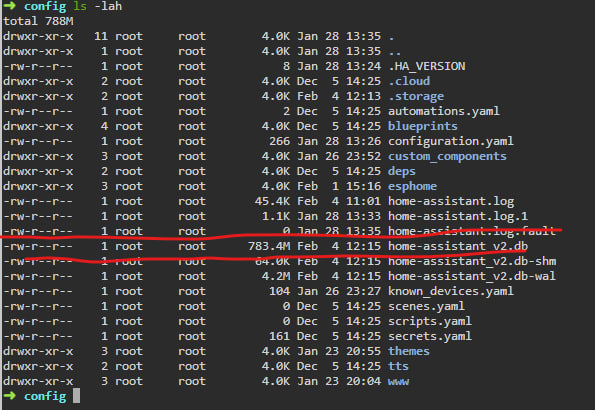Hello,
My IoT/Home Automation needs are centered around custom built ESPHome devices and I currently have them all connected to a HA instance and things work fine.
Now, I like HA’s interface and all the sugar candy, however I don’t like the massive amounts of resources it requires and the fact that the storage usage keeps growing and it is essentially a huge, albeit successful, docker clusterfuck.
Is there any alternative dashboard that just does this:
- Specifically made for ESPHome devices - no other devices required;
- Single daemon or something PHP/Python/Node that you can setup manually with a few systemd units;
- Connects to the ESPHome devices, logs the data and shows a dashboard with it;
- Runs offline, doesn’t go into 24234 GitHub repositories all the time and whatnot.
Obviously that I’m expecting more manual configuration, I’m okay with having to edit a config file somewhere to add a device, change the dashboard layout etc. I also don’t need the ESPHome part that builds and deploys configurations to devices as I can do that locally on my computer.
Thank you.
How has home assistant become a resource monster? What kind of integrations are you using aside from ESPHome?
I’m not using any other integration. Isn’t this a resource monster?

I just don’t want to keep running an entire VM with their image. Something more simple that could be used on a LXC / systemd-nspawn container or directly on a base system would be nicer.
It’s half a GB of ram and virtually no CPU usage. You could run it on a Pi 3 with a 16Gb SD card and have resources to spare.
This is just weird.
What is weird is having to waste almost 700MB of ram + 10GB of storage for a simple webui that charts sensor data and only keeps it for 10 days. As a comparison my NAS container runs Samba4, FileBrowser, Syncthing, Transmission, and a few others under 300MB of RAM with pontual spikes on operations.
There’s a lot of difference between a container and a VM. You can install HA on a container, all you have to do is set it up according to the manual install instructions, and work around any hardware interfacing issues that come up. You’ll save 200MB of RAM and will have to do any upgrades manually. Doesn’t seem worth it to me, but to each their own.
If this is what you consider a resource monster you’re gonna have a really, really rough time
This isn’t reasonable at all, 700MB of ram + 10GB of storage for a simple webui that charts sensor data and only keeps it for 10 days.
You need to edit your configuration.yaml file to exclude certain sensors or values. I excluded some of the more chatty sensors that I didn’t need and my disk use went from around 40gb to 150mb
Acronyms, initialisms, abbreviations, contractions, and other phrases which expand to something larger, that I’ve seen in this thread:
Fewer Letters More Letters HA Home Assistant automation software ~ High Availability LXC Linux Containers MQTT Message Queue Telemetry Transport point-to-point networking NAS Network-Attached Storage
4 acronyms in this thread; the most compressed thread commented on today has 11 acronyms.
[Thread #457 for this sub, first seen 28th Jan 2024, 18:25] [FAQ] [Full list] [Contact] [Source code]
Why aren’t you using Node-red and ntfy/MQTT brokers? HA is feature-bloat for me
I wasn’t aware that node-red existed until this post :P
Have fun!
I went with the virtual appliance when I installed Home Assistant several years ago, turned out to be a great decision looking at how it’s architected. I only self-host the database separately, which i’ve found easier to manage.
the fact that the storage usage keeps growing
There should be a setting to reduce how long Home Assistant retains data for - I removed the limit on mine, however its possible that on newer versions they’ve changed the default
Hope you find a solution though - I think node red (capable of doing dashboards on its own) with something else is going to get you part way there.
I’ve been doing this. I’m running HA under LXD (VM) and it works.
$ lxc info havm Name: havm Status: RUNNING Type: virtual-machine Architecture: x86_64 PID: 541921 Created: 2023/12/05 14:14 WET Last Used: 2024/01/28 13:35 WETWhile it works great and it was very easy to get the VM running I would rather move to something lighter like a container. About the storage I just see it growing everyday and from what I read it should be keeping for 10 days however it keeps growing. Almost 10GB for a web interface and logs from a couple of sensors, wtf?
I would be very happy with HA, really no need to move other stuff as long as things were a bit less opaque than a ready to go VM that runs 32434 daemons and containers inside it.
Curious, you might want to look into what’s generating your data first. It’s easy to generate data, it’s harder to only keep the data that’s useful.
And how do I go about that?
One logs into the VM and starts checking the files of course. Go from there.
FYI the DB isn’t even that big and the total space is growing at around 100MB every 2 days.


I just don’t get it.
Curious, you might want to look into what is generating your data then first. It’s very easy to generate data, it’s a lot harder to only generate and keep useful data.
I don’t get it: https://lemmy.world/comment/7111683




